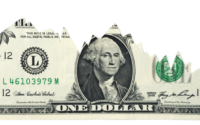Treasuries Hammered Ahead of Jobs Report as Market Doubts Powell
(Bloomberg) — An escalating selloff in long-end Treasuries pushed yields to fresh multi-year highs Thursday, with the benchmark 10-year rate closing above 3% for the first time since 2018 as concern over inflation rattled the bond market.
Most Read from Bloomberg
The 10-year finally pushed beyond the 3% threshold that had been tested for four straight trading sessions, while yields on the 30-year bond rose eight basis points to 3.12%. Short-end yields also rose, albeit by less, unraveling part of the move lower from Wednesday that was spurred by the Federal Reserve meeting and its aftermath. Late in New York, Treasury yields were modestly below their session peaks.
The selling pressure in long-dated yields spread to most other markets as investors fretted that inflation will get out of hand even with central banks raising policy rates and signaling further hikes are soon to come. Canada’s 10-year yield reached 3% for first time since 2011, while Australian benchmark yields surged Friday, unwinding more than half the previous day’s decline. An outlier was the U.K., with gilt yields falling even as the Bank of England raised rates to their highest level since 2009, warning that the British economy faced a rising recession risk and double-digit inflation.
The lagging rise in more policy-sensitive Treasury yields such as the two-year also maintained a steepening trend in the U.S. curve. That trading shift was spurred when Fed chair Jay Powell poured cold water on the central bank considering more aggressive three-quarter point hikes at forthcoming policy meetings.
“Taking the 75 basis points off the table just in a very general sense doesn’t seem aggressive enough to really get inflation down,” said James Camp, director of fixed-income at Eagle Asset Management, adding that the market is “likely to push the 10-year yield through 3.23%.” That’s near the peak seen in late 2018 when the Fed was previously tightening policy.
Also on the minds of bond traders is the release of April jobs data on Friday, expected to show solid growth and wage pressure running at a 5.5% annual pace. That is followed by consumer-price index data next week that will coincide with the sale of new 10-, and 30-year Treasuries, an environment that tends to see bond traders push prices lower so the debt arrives with higher fixed-rate coupons.
The current level of short-dated yields is seen reflecting expectations for a further three Fed rate hikes of 50 basis points apiece through September. In contrast, long-dated yields are being pressured higher and that was being propelled by a renewed rise in real, or inflation adjusted yields. The 10-year real yield extended this week’s rise above zero and at one point was higher by 17 basis points at 0.22% before the benchmark eased a little.
“The curve is steepening, which is telling you the Fed is not doing enough,” Andrew Brenner, head of international fixed income at NatAlliance Securities said in a note. “This could be the run to the high levels of the year in the long end, trying to send Powell a message. And this is why we continue to say at every Fed meeting, the real market starts about 18 hours after the Fed announcement.”
(Updates with Australian yields climbing Friday in fourth paragraph. A previous version was corrected to remove an erroneous reference to Australian yields rising on Thursday)
Most Read from Bloomberg Businessweek
©2022 Bloomberg L.P.
[ad_2]
Source link


